It has been said that no two arcade racers are created equal.
With true-to-life audio, strong graphics, and impressive driving mechanics, they can offer up one of the most immersive gaming experiences available on the market today. Especially once you find yourself comfortably nestled in that durable plastic racing seat with a vice-like grip on the steering wheel.
As the checkered flag drops, you crunch the shifter into first, hammer on the gas, and quickly lose yourself for but a few brief moments as you careen around a virtual race track at breakneck speeds!
It’s truly an experience like no other. One that remains untouched even in today’s modern world of high-tech gaming consoles and powerful smartphones.
This nostalgic cabinet class really came into its own with the arrival of the 1990s. While the decade saw the venue drop in popularity, technological improvements took the arcade experience to a whole new level.
A slew of brand new games arrived on the scene and allowed these coin-operated machines to continue flourishing even as more and more titles were found released on top-ranking consoles from the likes of Nintendo, Sega, and Sony.
It was a gaming decade like no other. And, it brought with it some of the very best racing games of all time! Here is a look at
The 10 Best Racing Arcade Games Of The 90s
Virtua Racing (1992)
Let’s kick things off with a classic title from Sega AM2. Released to arcades in March of 1992, Virtua Racing puts gamers behind the wheel of a Formula One car and sets them loose on a total of three different tracks with varying degrees of difficulty.
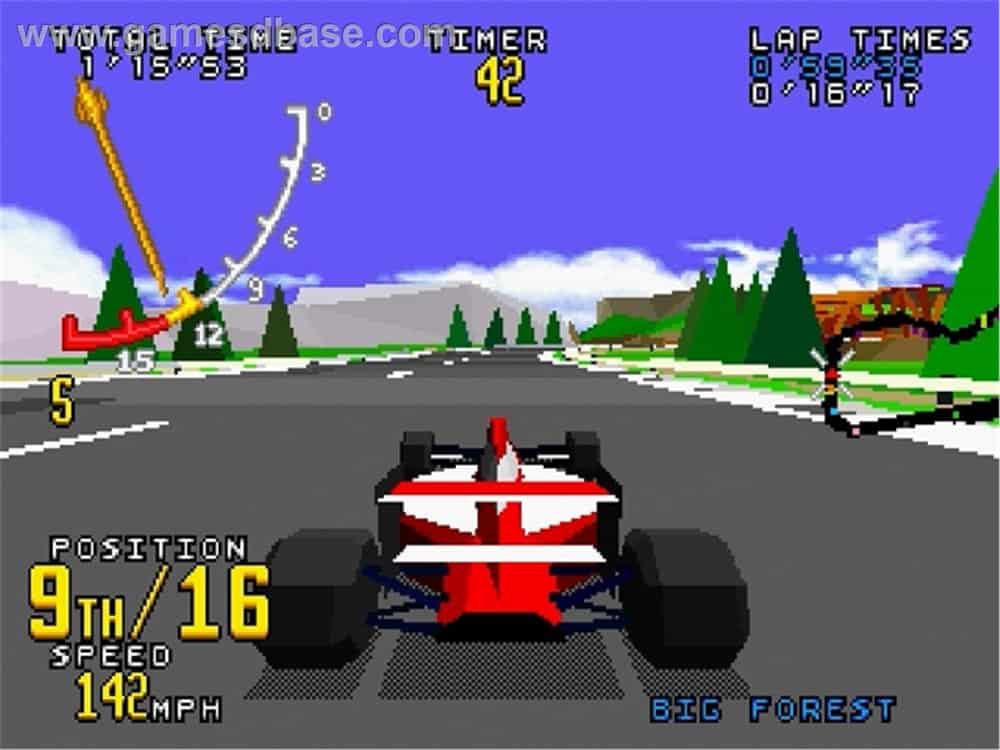
Interestingly, the game began its life as a proof-of-concept application for a new 3D graphics platform that was under development at the time. However, the end results were so impressive that Sega soon decided to throw caution to the wind and expand Virtua Racing into a full-blown arcade game all its own.
Featuring a host of special features and being forever credited with introducing the V.R. View System into play, Virtua Racing quickly became one of the highest-grossing arcade games in both Japan and North America.
Additionally, it would go on to receive the award for Most Innovative New Technology from the Amusement & Music Operators Association the following year.
Even now, Virtua Racing is regarded as one of the most influential video games of all time. This is thanks in no small part to its popularization of the 3D polygon graphics that would become a foundation of future racing games even years down the road.
While it would eventually be ported to numerous platforms ranging from the Sega Genesis to the PlayStation 2, most critics agree that it is the original arcade version that offers gamers the most immersive driving experience of them all.
Why We Love It: “A technological pioneer that set the stage for an entire generation of racing games and what they could be.”
Daytona USA (1994)
Another title hailing from Sega AM2, Daytona USA began arriving at arcades across the globe in 1994.

The concept was first suggested by Sega’s American arcade division president Tom Petit and took inspiration from the popular NASCAR racing series based out of the United States. Toshihiro Nagoshi served as both director and producer on the game, which sees players racing stock cars around a total of three different tracks.
An extensive amount of research was put into the game’s development, with Sega hoping that it would outperform Namco’s popular Ridge Racer title from the previous year.
Sparing no expense, they used satellite imagery and photography to map the Daytona International Speedway – in addition to using a host of impressive visual effects tricks that had helped propel Virtua Racing to the top of the charts back in 1992.
Their hard work soon paid off. The state-of-the-art Daytona USA quickly became one of the hottest arcade games of the year – as well as one of the highest-grossing arcade games of all time!
Praised by critics for its amazing graphics, soundtrack, and overall realism, it was eventually ported over to numerous platforms and even spawned a successful sequel that featured numerous enhancements over the original.
Even now, almost three decades later, Sega’s Daytona USA is still seen as one of the most influential titles within the racing game genre – in addition to being named one of the very best video games of all time.
Why We Love It: “One of the highest-grossing arcade games of all time, this technological triumph stands as a testament to the massive appeal of stock car racing.”
Manx TT Super Bike (1995)
A joint venture between Sega AM3 and Sega AM-4, Manx TT Super Bike is the brainchild of Sega Rally producer Tetsuya Mizuguchi.
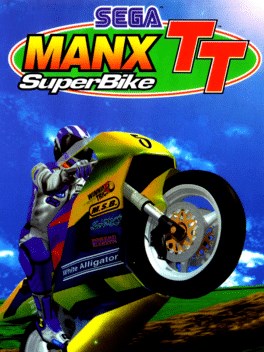
Released in November 1995, the game has players using their entire body to navigate a high-performance motorcycle through a selection of world-famous race tracks during the Isle of Man TT – which is regarded by many as one of the most dangerous racing events the world over.
First demonstrated at the 1995 JAMMA Show in Japan, the game allows up to eight friends to take part in a race if enough machines are linked together. Critics not only praised the strong graphics, but also the innovative cabinet – which incorporated a bike-like machine that tilted so the player could maneuver the on-screen bike through their physical mount.
Players would shift their weight left and right to navigate twists and turns on the track, thus affording one of the most realistic racing experiences available on the market at the time.
Manx TT Super Bike would become one of the highest-grossing arcade games of the mid-90s, while at the same time being awarded perfect scores in numerous publications ranging from CVG to Next Generation respectively.
It would eventually be ported to both the Sega Saturn and Windows PCs, however, most gamers will tell you nothing beats straddling that original bike-shaped module and tearing it up across the Isle Of Man with eight of your closest pals!
Why We Love It: “With an innovative design, this one incorporated physical movement into video games more than twenty years before the Nintendo Wii arrived on the scene.”
Hydro Thunder (1999)
Marketed as a ‘full throttle adrenaline rush’, Hydro Thunder was released to arcades in 1999 by Midway San Diego. The gameplay is straightforward enough, as players race their high-tech speedboats through a series of treacherous environments in an effort to emerge the winner.

Scattered throughout these areas are blue and red boost icons which, when touched, allow the player who touched them to significantly increase the speed of their boat for a limited time. Additionally, when boosting, players can knock other boats out of their way and into the air. Which was easily one of the coolest aspects of this unique racing title!
Critics and gamers alike praised Hydro Thunder for its crisp graphics and ingenuity, and many felt that the resulting port released as a launch title for the Sega Dreamcast actually improved upon the original thanks to its killer visuals, addictive gameplay, and great physics.
Hydro Thunder was a success both at the arcade and at home, offering up a rather fresh entry to the racing game genre that eventually resulted in the formation of the Thunder sub-series and a planned sequel – which sadly never made it into production.
That said, Hydro Thunder still offered up one of the most engaging racing experiences of the time. Combine that with a host of interesting courses, a rockin’ soundtrack, and a flashy aqua-colored cabinet that made you feel as though you were seated at the controls of some high-performance hydrofoil, and you’ve got a title that still brings the fun factor more than two decades later!
Why We Love It: “This one feels fresh and unique even by today’s standards!”
Crazy Taxi (1999)
Developed by Hitmaker and published by Sega, Crazy Taxi arrived in local arcades back in February of 1999. The game soon became so popular that Sega decided to port it over to the Dreamcast that following year – where it quickly became that console’s third best-selling title with over a million copies sold in the United States alone!
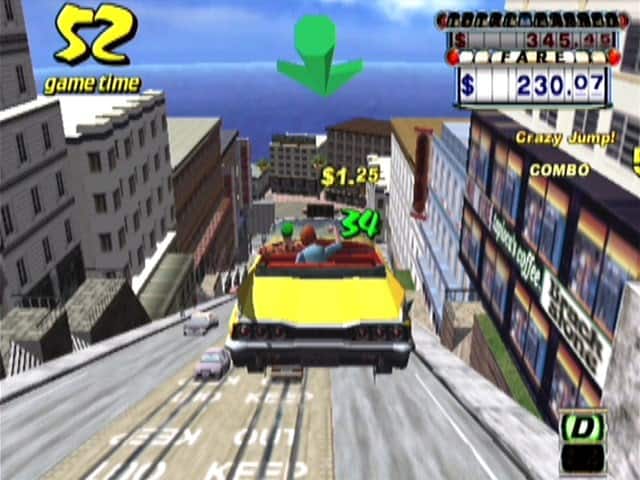
The game sees players jumping behind the wheel of a cab and taking fares to their destination in the fastest time possible. Along the way, you can use crazy stunt moves like jumps, drifts, and near-misses to earn extra money. Time bonuses are also awarded depending on how quickly you can reach a chosen destination.
This one was a lot of fun and involved a lot more than simply driving a taxi cab from Point A to Point B. It featured strong graphics, excellent driving mechanics, and a fantastic hard rock soundtrack that just begged you to hit the gas and drive!
In addition, the arcade cabinet further immersed you into the game by offering a cockpit seat, steering wheel, gear shift lever, brake, and acceleration pedals that really took the overall Crazy Taxi driving experience to a whole new level of awesome!
Why We Love It: “It’s just way too much fun for its own good!”
Star Wars Racer (2000)
I cannot stress just how much I loved this game! Released across the globe in 2000, this joint venture from Sega-AM5 and LucasArts sees players taking control of their very own podracer and zipping across four treacherous tracks spread throughout different points within the Star Wars Universe.
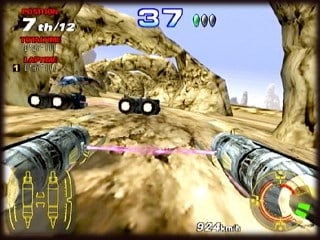
Based on the Podrace scenes in The Phantom Menace, players control their chosen racer via two handheld throttle controls, similar to how the pods are controlled in the film. Unlike the home console version that followed soon after, the Podracers in the arcade version are indestructible – although they can suffer slowdown from damage received on the course.
As I said above, I loved this game! I’m a huge Star Wars fan and, while The Phantom Menace is far from my favorite entry in the franchise, the lightning-fast Podrace featured in the film was definitely one of its high points! I loved the piloting mechanics, strong graphics, and realistic physics – the fact that this was a Star Wars game was just a bonus!
Star Wars Racer was available in multiple configurations, but it is the deluxe cabinet – complete with a 50″ screen and exquisite Podracer module, that offers the best bang for your buck gaming experience of them all! To coin a popular phrase from a galaxy far, far away…
Why We Love It: “Personal preference aside, this one featured some strong piloting mechanics and brought the world of Star Wars into the racing class for the first time!”
San Francisco Rush: Extreme Racing (1996)
Atari Games unleashed San Francisco Rush: Extreme Racing to arcades in December of 1996. It was the very first game to use their popular Flagstaff engine, and would eventually receive two ROM updates in 1997 and 1998 that actually allowed arcade owners to extend the life of the original cabinet.
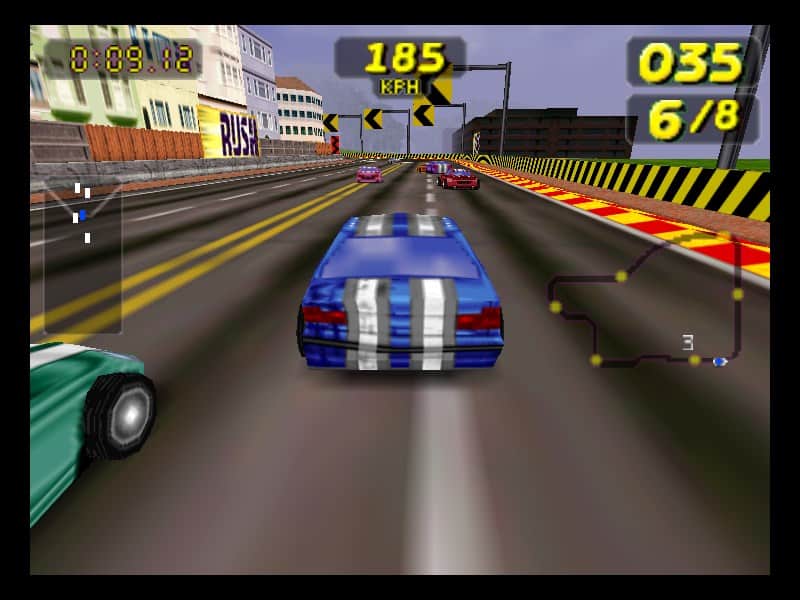
The game was a major hit with critics, earning top scores across the board. Additionally, it was one of the highest-grossing games of the year and cited as a major comeback title that restored Atari Games’ fortunes as an arcade game developer.
Some even credit the racer with helping breathe new life into arcades, which were slowly starting to dwindle in popularity thanks to the rapidly increasing availability of next-gen consoles like the Nintendo 64.
San Francisco Rush: Extreme Racing was praised for its strong graphics, superb audio, and a rather inventive shortcut system that took players through sewers, across broken down freeways, and over skyscraper rooftops during play.
Ports of the game would be released for the Nintendo 64, Sony PlayStation, and Windows PCs through Midway Games. In later years, it would also see versions on the Game Cube, PlayStation 2, and original Xbox respectively. Three successful sequels would follow before the series drove off into the sunset once and for all.
Why We Love It: “Credited with keeping gamers in arcades for a little bit longer, it also featured one of the first updateable arcade cabinets and an innovative shortcut system that is still talked about to this very day!”
Sega Rally Championship (1994)
Another Pedal To The Metal classic from Sega AM3, Sega Rally Championship offered a truly unique gaming experience that allowed players to drive their cars on different surfaces – each with different friction properties.
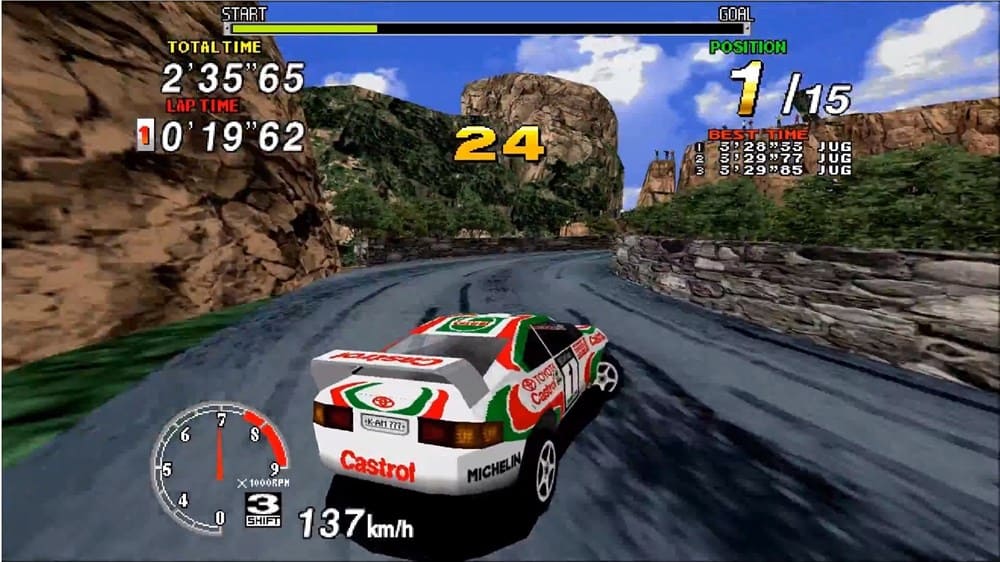
As a result, this one really kept you on your toes. Car handling changed depending on what sort of surface you were driving on, meaning that gamers would be forced to modify their driving style with each subsequent race they participated in.
Being the very first game to incorporate this feature, Sega Rally Championship is considered by many to be a milestone title within the evolution of the racing game class.
Kenji Sasaki, who had previously worked on Namco’s Ridge Racer, directed this new game. Set apart from other racing cabinets of the day, Sega Rally Championship featured a total of three different cars and was praised for its cooperative gameplay and included tuning options.
It would go on to become one of the top arcade games of 1995 in both Japan and North America, and would even receive the Platinum Award from the American Amusement Machine Association.
As if that’s not enough, the game sold 12,000 cabinets following its launch. It would also spawn an entire series of games, serve as the inspiration behind Colin McRae Rally in 1998 and sell an impressive 1.2-Million copies once ported over to the Sega Saturn.
This one was a game changer in every sense of the word!
Why We Love It: “Guaranteed to keep you on your toes, this Sega title offered up one of the most realistic driving experiences in the industry at the time, while also introducing both cooperative gameplay and simple tuning aspects to the genre.”
Ridge Racer (1993)
Perhaps the crown jewel of early 90s arcade racers, at least if you ask this writer. Namco’s Ridge Racer took the gaming world by storm in 1993 and spawned one of the most successful virtual franchises of all time!
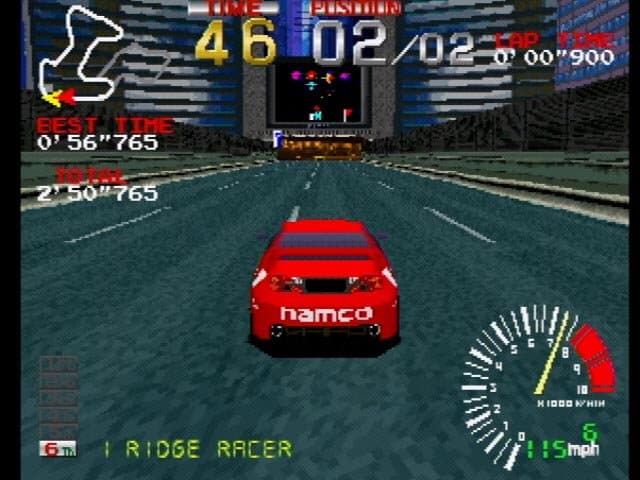
Considered the spiritual successor to Sim Drive, Ridge Racer was praised by critics and gamers for its strong 3D graphics, realistic audio, and true-to-life drifting mechanics.
Easily one of the most popular titles of the 90s, it would be ported to multiple platforms and spawn several sequels and spin-off games that have kept the series going strong for over twenty-five years!
Interestingly, when released to the Sony PlayStation, Ridge Racer would become one of the best selling titles in the console’s early lifetime. Additionally, many consider the success of Ridge Racer as playing a major part in giving Sony’s system an edge over the Sega Saturn between 1994 and 1995. Heck, Eiffel 65 even mentioned the game on their hit 1999 album Europop.
If that isn’t enough reason to see why it remains a permeant fixture within the pop culture zeitgeist even after all these years, I don’t know what is.
Why We Love It: “Immensely popular and known by all, it was an industry standard for years that would go on to spawn a legacy lasting over two and a half decades!”
Cruis’n USA (1994)
Speeding on the scene from Midway Games in September of 1994, this one had it all! Strong graphics, realistic audio, true-to-life driving mechanics, and a fun factor that resulted in almost every last arcade, midway, bar, mall, and restaurant of the early 1990s having some form of this racer on premises. Needless to say, it was a personal favorite of this writer – and still remains so to this very day!
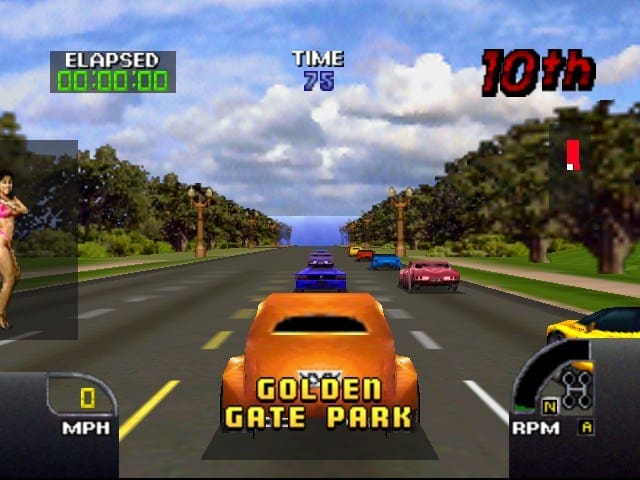
Spearheaded by Eugene Jarvis, Cruis’n USA was a joint venture between Nintendo and WMS Industries that was branded as the first official release on their newly developed Ultra 64 platform.
Looking to compete with the likes of Daytona USA and Ridge Racer, it would quickly become a massive hit as one of America’s top five best-selling arcade games of 1994. However, this is far from where the story ends!
Cruis’n USA would go on to receive a Diamond Award from the Amusement & Music Operators Association and would even become the highest-grossing dedicated arcade cabinet of 1995 in the United States. Nintendo would port the title over to the N64 in 1996, however, critics agree that it is the original arcade version that truly reigns supreme as one of the top contenders for the driving crown. And, I’m inclined to agree with them.
The fact is that this one was everywhere in the early 90s and, while better looking games would come along during its lifetime, Cruis’n USA demonstrated some serious staying power that lasted right into the new millennium.
It launched a successful series of games and, while the home console version really fell short of what had come before, Cruis’n USA dominated the arcade racer scene for years, taking everything we loved about the genre and dialing it up to 11 in its own unique way!
Why We Love It: “Further proof that Nintendo knows best, this one was everywhere throughout the decade and demonstrated some serious staying power – even against the heavy hitters with better graphics and more realistic driving mechanics!”





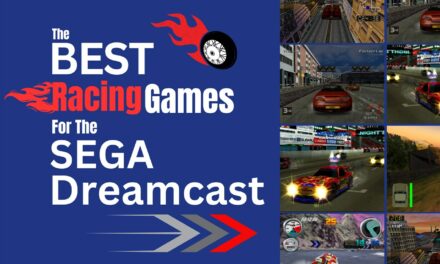





I remember playing many of these games in the arcade and it’s great to see them being recognized for their impact on gaming history.